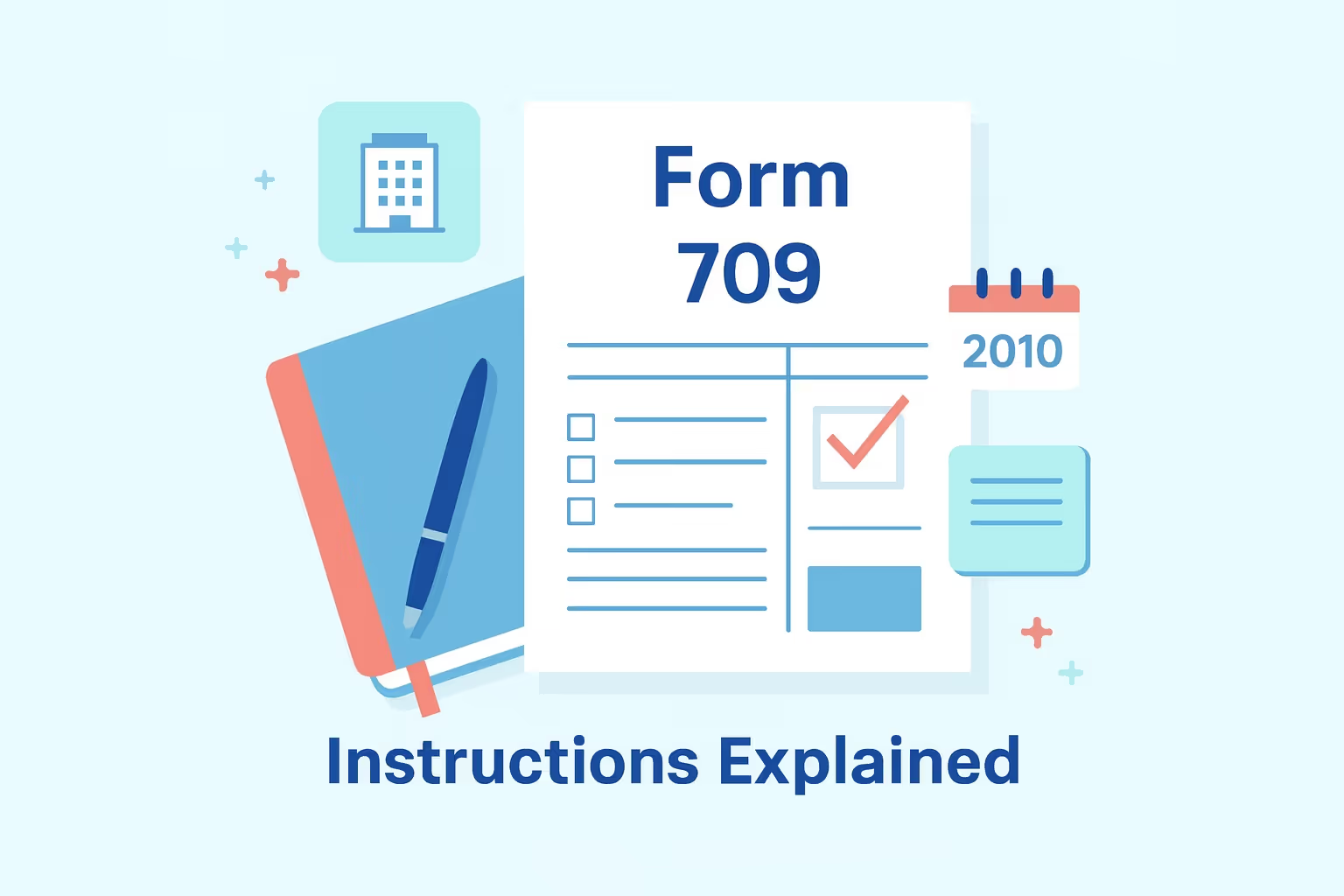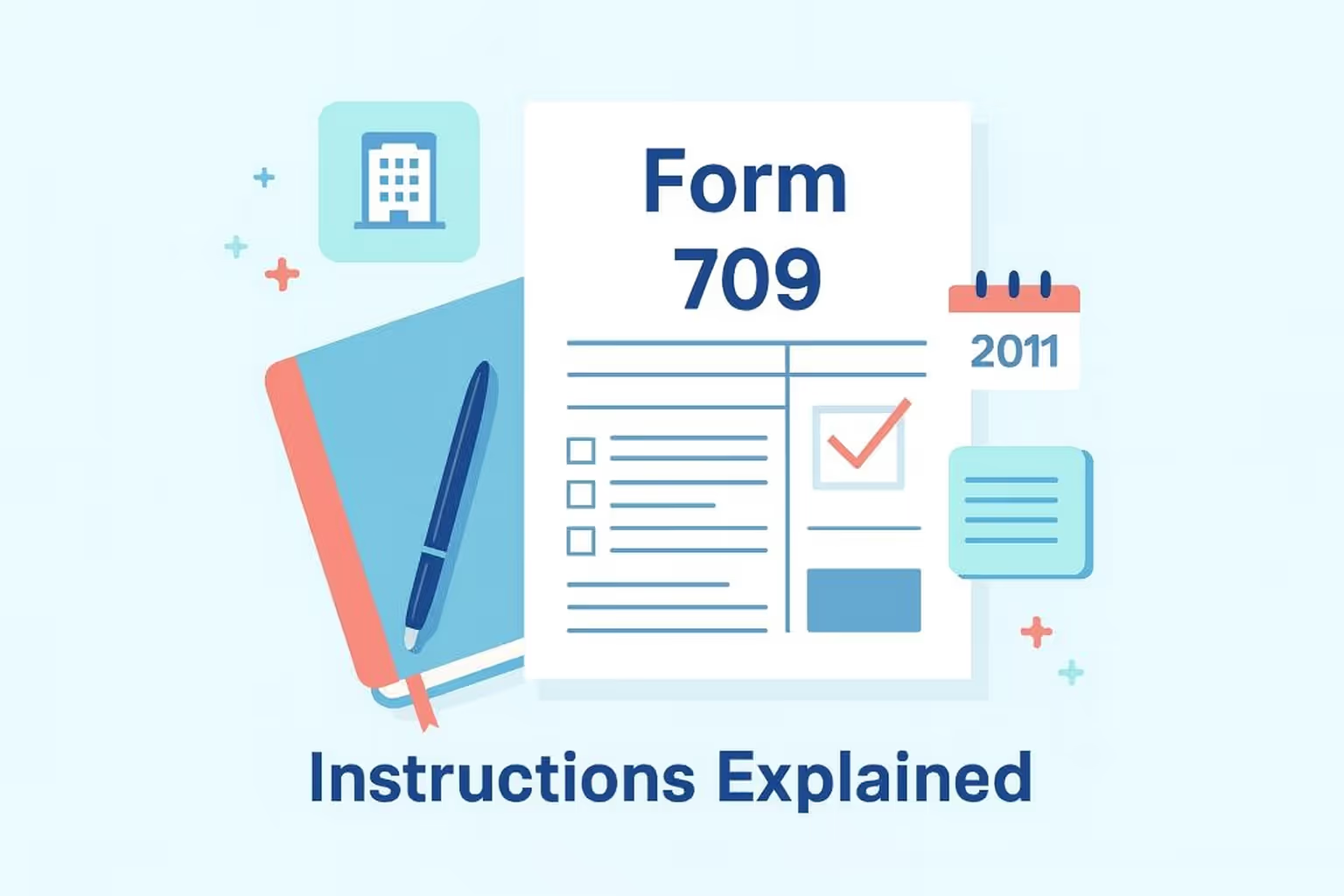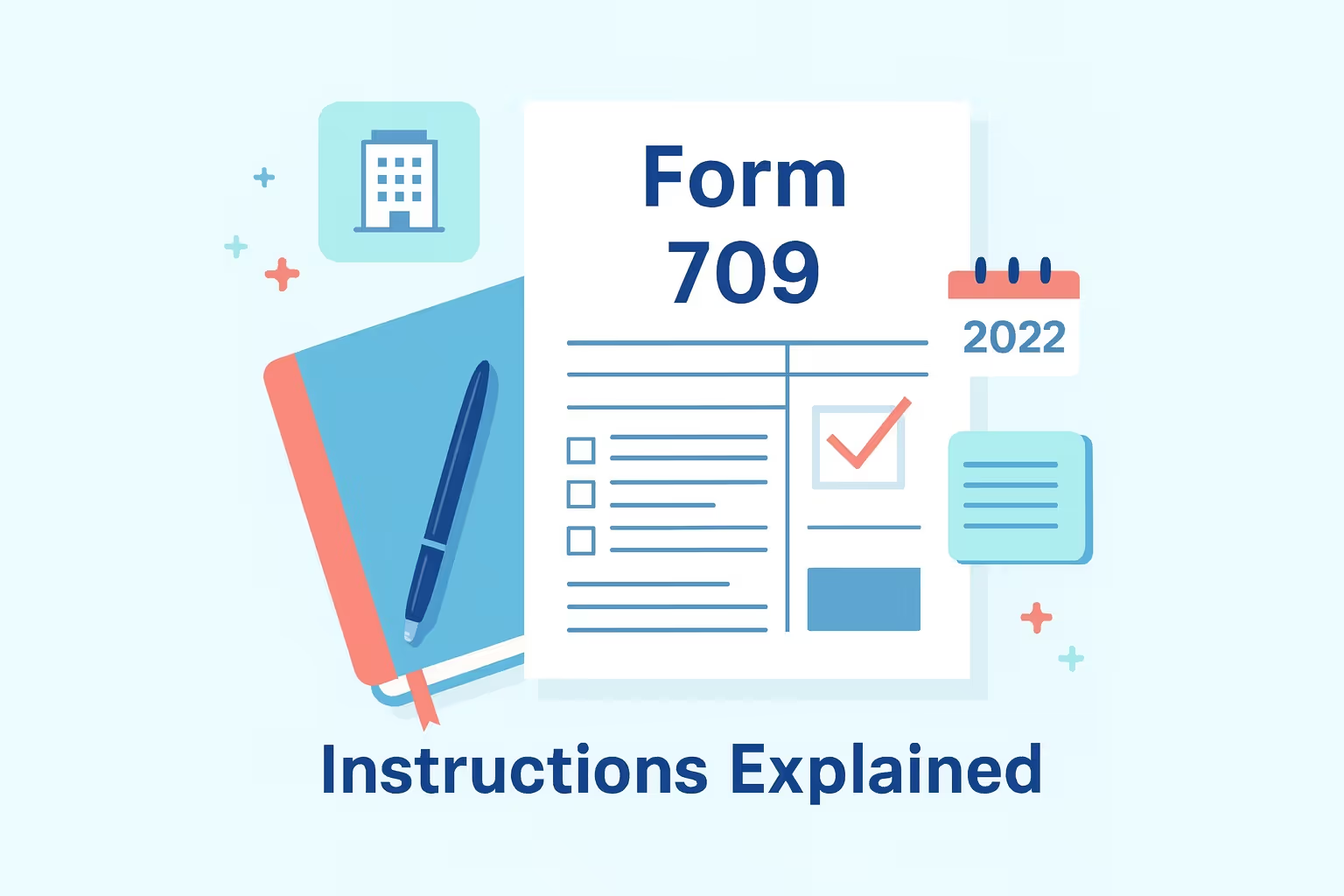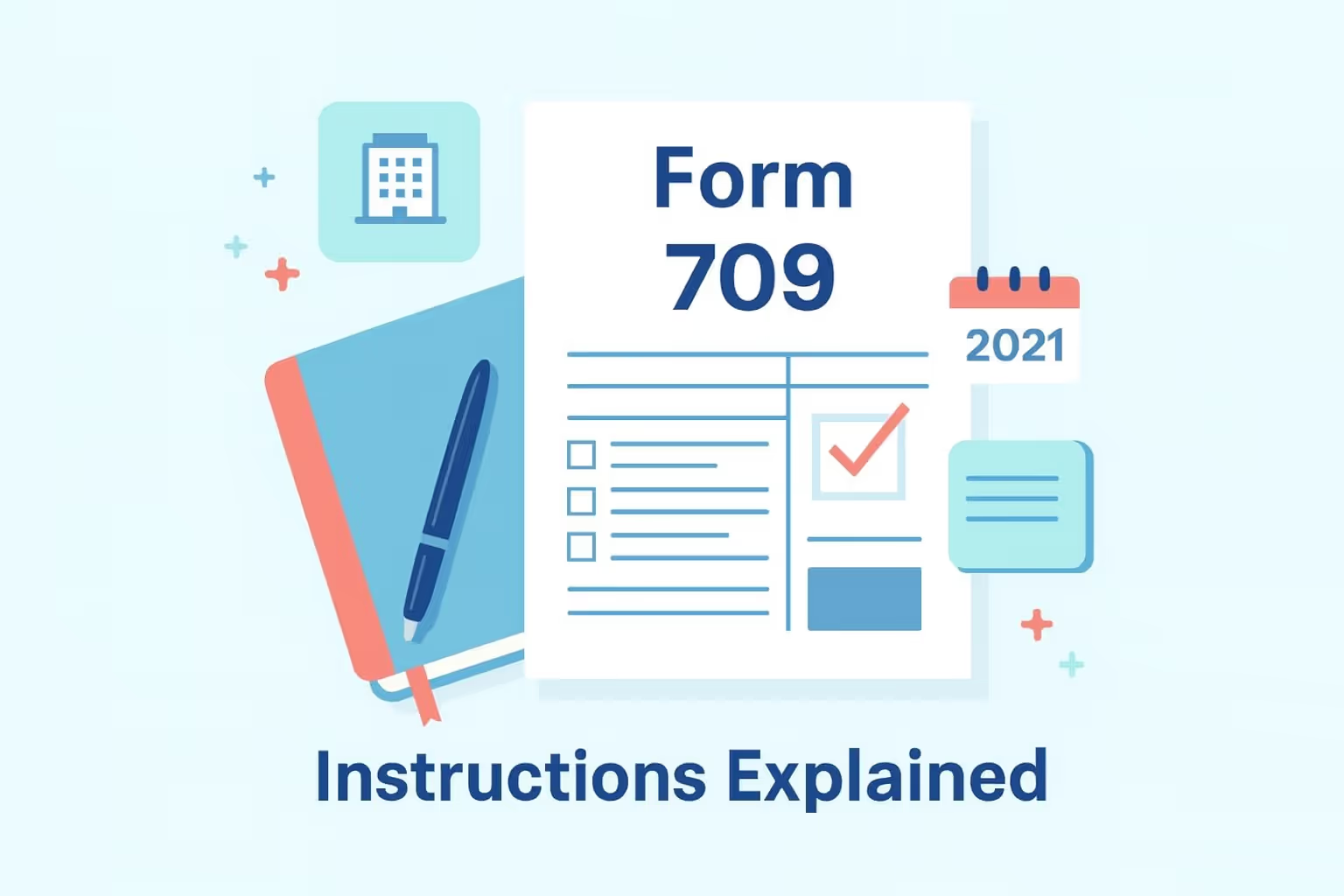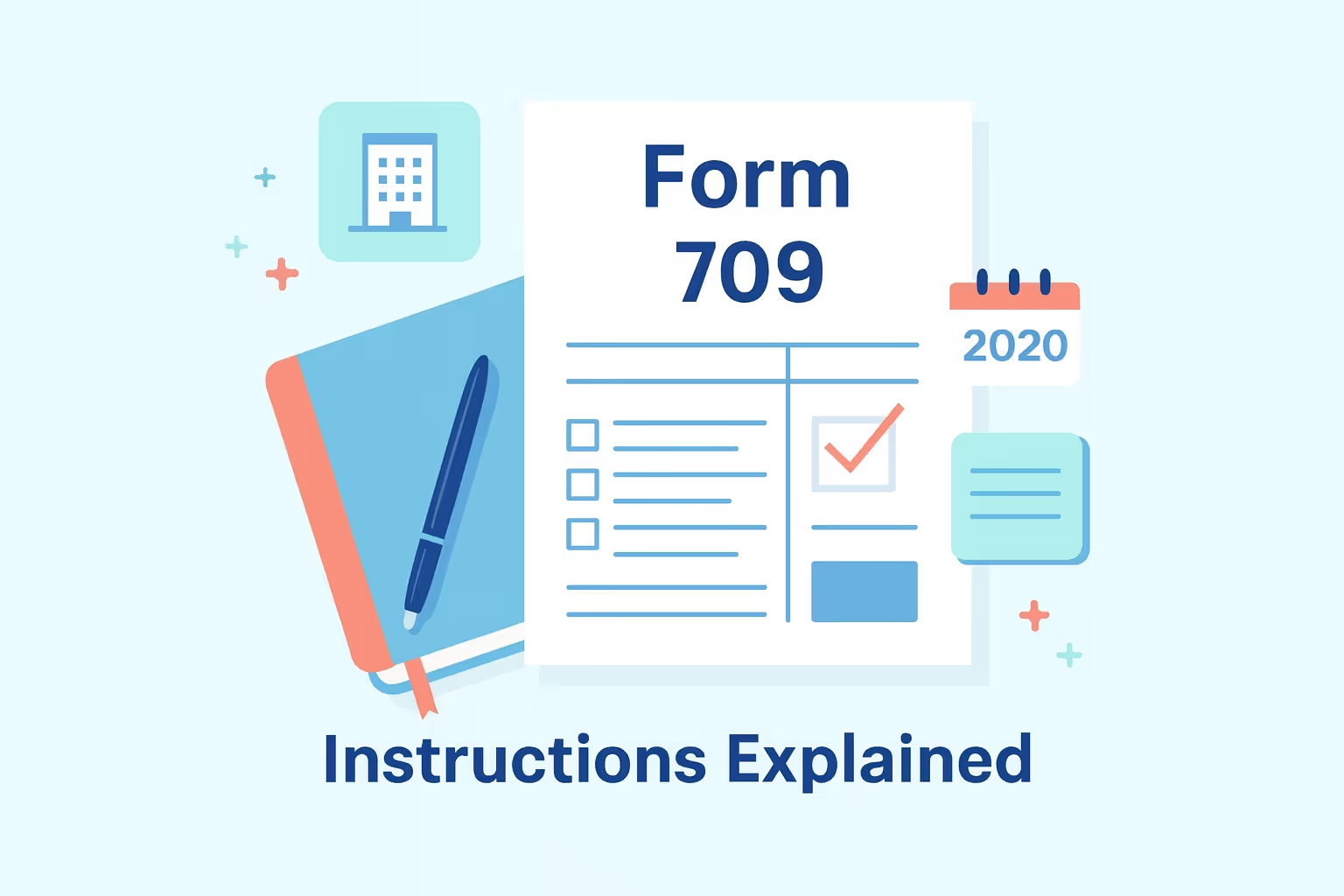Form 706 2014 instructions guide executors and estate administrators who must file a federal estate tax return for a deceased person whose estate met the 2014 filing threshold of $5,340,000. This obligation applies when the decedent’s estate contains significant assets, including bank accounts, insurance policies, jointly held property, and lifetime gifts. The return calculates and reports the federal estate tax based on the total value of the decedent’s assets. Executors filing an estate tax return must also include the decedent’s adjusted taxable gifts and specific gift tax exemption when determining whether the filing requirement is met.
Accurate reporting begins with identifying each estate asset that generates income or has measurable value. Income-producing assets, such as publicly traded securities and other easily valued assets, must be listed precisely to comply with Internal Revenue Service standards. Executors must accurately document tangible personal property, real estate, and jointly held accounts to ensure proper valuation. Each reported asset contributes to the estate’s total value, which forms the basis for tax liability.
Executors can review official filing procedures, recordkeeping requirements, and current IRS updates in the Instructions for Form 706 (Rev. August 2014). Reviewing the IRS resource before preparation helps ensure accuracy, prevents delays, and maintains compliance with federal estate tax laws.
Understanding Form 706 and 2014 Estate Tax Rules
Form 706, also known as the United States Estate (and Generation-Skipping Transfer) Tax Return, applies to the estate of a deceased person when the total value meets or exceeds the federal estate tax filing threshold. For estates of decedents who passed away in 2014, the threshold was set at $5,340,000.
Executors and estate administrators use this return to calculate the federal estate tax, report adjusted taxable gifts, and determine applicable gift tax exemptions. The form also helps establish the total value of the decedent’s assets, including lifetime gifts and tangible personal property, to ensure proper assessment of the estate’s tax liability.
Filing Threshold
The filing threshold represents the total value of all assets, both real and personal, owned or partially owned at the decedent’s death. Executors must evaluate each asset, such as bank accounts, insurance policies, and jointly held property, to accurately calculate the gross estate.
Executors must also include, in the gross estate, the fair market value of property transferred within three years of the decedent’s death. Estates exceeding the 2014 threshold must file an estate tax return, even when certain deductions, exemptions, or credits may eventually reduce the total federal estate tax owed.
Estate Tax Purposes
Form 706 fulfills several functions under federal law. It determines the portion of the estate subject to federal estate tax and identifies applicable deductions, such as marital or charitable transfers, that reduce the taxable amount. The form also discloses any lifetime gifts previously made and reconciles them against the current value of the estate. Executors must maintain detailed records, as the Internal Revenue Service reviews asset descriptions, supporting appraisals, and calculations to ensure full compliance with the law.
File an Estate Tax
To file an estate tax return correctly, the executor must include all relevant schedules that document real property, business interests, and income-producing assets. The return also reports gross income from estate holdings, reflecting income generated before distribution to heirs during administration.
Estates holding easily valued assets, such as publicly traded securities, require verified appraisals or pricing records dated to the decedent’s death. Each reported figure supports the calculation of the total value, which determines whether the estate meets federal filing requirements.
Correctly understanding these requirements ensures accurate reporting and avoids unnecessary errors. Establishing a complete inventory of the decedent’s assets helps clarify whether the estate is subject to federal estate tax. The following section explains how updates in 2014, including portability and new valuation thresholds, affect filing requirements for estates and surviving spouses.
2014 Updates and DSUE Portability
The 2014 tax year introduced significant updates to Form 706, affecting how executors file an estate tax return and transfer unused exemptions to a surviving spouse. The 2014 version added Part 6, which allows portability of the Deceased Spousal Unused Exclusion (DSUE) amount. This update provided flexibility for married couples, allowing the surviving spouse to apply any remaining exemption from the deceased spouse’s estate toward their own future estate or gift tax liabilities. Executors responsible for estates in 2014 must understand how these updates influence both filing requirements and the estate plan.
Estate Plan
The estate plan for a deceased person determines how property transfers to heirs, beneficiaries, or a surviving spouse. Under the 2014 regulations, the federal estate tax exemption increased to $5,340,000, with an applicable credit amount of $2,081,800. Estates exceeding this threshold are required to file a federal estate tax return, while those below it may still file voluntarily to elect DSUE portability.
Filing the return ensures the Internal Revenue Service recognizes the election and documents the value of the decedent’s assets. Maintaining these records allows the surviving spouse to apply the unused exemption toward future estate or gift tax obligations.
Jointly Held Property
Executors must carefully document jointly held property and lifetime gifts to accurately calculate the gross estate. Any jointly owned assets, such as bank accounts, insurance policies, or real property, must reflect the decedent’s share of ownership and corresponding fair market value. Only the decedent’s portion is included in the taxable estate if a married couple owned property together.
Including accurate details for jointly held property ensures proper valuation and helps determine whether the estate qualifies for the portability election. Executors should also list tangible personal property, publicly traded securities, and other easily valued assets when computing the total value.
The IRS provides detailed guidance on estate tax filing requirements and the DSUE portability process on its Estate Tax page, which outlines filing requirements, deadlines, portability rules for surviving spouses, and procedures for submitting Form 706. Executors who rely on these updates can ensure compliance, preserve tax benefits, and maintain accurate records for future planning.
Understanding these 2014 updates helps executors align reporting with federal standards and avoid missing critical elections. By integrating DSUE portability and proper valuation methods into the estate’s records, families can preserve more assets while meeting federal filing obligations.
Step-by-Step Filing Process for Executors
Filing Form 706 for a deceased person’s estate requires organization, attention to detail, and an understanding of federal filing obligations. Executors must begin with a complete inventory of the decedent’s assets, including real estate, income-producing assets, bank accounts, insurance policies, and tangible personal property. Every asset must reflect its fair market value as of the decedent’s date of death to determine whether the estate exceeds the 2014 filing threshold of $5,340,000. A structured approach ensures accuracy and compliance with federal estate tax requirements.
Step 1. Confirm the Filing Requirement
Executors must calculate the total value of all assets and include the decedent’s adjusted taxable gifts and any specific gift tax exemption claimed during life. If the total value exceeds the 2014 filing threshold, or the estate elects DSUE portability, the executor must file Form 706. Estates near the threshold should document all lifetime gifts, jointly held property, and remaining assets to avoid underreporting. This review establishes whether filing an estate tax return is mandatory or optional for portability purposes.
Step 2. Gather Essential Records
Executors must collect official documentation before completing the return. These records include:
- The death certificate provides proof of the decedent’s death and filing date.
- Executor appointment documents establish legal authority to act on behalf of the estate.
- The last will identifies beneficiaries and outlines the terms of the estate administration.
- Bank accounts and financial statements verify balances and ownership interests.
- Insurance policies and Forms 712 show policy values and beneficiary information.
- Real estate appraisals and property records provide evidence supporting fair market value assessments.
- Gift tax returns (Forms 709) document lifetime gifts and previously claimed exemptions.
Each document contributes to determining the total value of the decedent’s estate and supports reported figures on the federal form.
Step 3. Complete and Review Form 706
The executor should complete each section of Form 706 in order, beginning with Parts 1 through 6. Attach all applicable schedules detailing assets, deductions, and elections. Review calculations for accuracy, confirm the estate’s tax identification number, and verify that each schedule supports the gross estate total. Before submission, organize the return, supporting attachments, and valuation documents into a single, well-documented package.
A methodical filing process minimizes errors and ensures compliance with federal estate tax laws. Executors who maintain detailed records and complete each schedule accurately strengthen the integrity of the return. A thorough approach also helps protect beneficiaries from future disputes and supports smooth estate administration.
Calculating the Estate Tax and Deductions
Determining the federal estate tax requires a clear understanding of how the gross estate transforms into the taxable estate through allowable deductions and credits. Executors must first calculate the total value of all assets owned or partially owned at the decedent’s death, including real property, bank accounts, insurance policies, and income-producing assets. The total value, known as the gross estate, forms the foundation for the estate tax computation. Each deduction and exemption reduces the estate’s final tax liability under federal law.
Gross Estate and Taxable Estate
The gross estate includes every item of value the decedent owned or controlled, such as publicly traded securities, jointly held property, and tangible personal property. Executors must identify the fair market value of these assets as of the decedent’s date of death. Once the gross estate is established, adjustments follow to reach the taxable estate.
Adjustments include deducting the decedent’s adjusted taxable gifts, specific gift tax exemption, and qualifying deductions such as debts, expenses, and charitable contributions. Correctly applying these reductions ensures an accurate assessment of the federal estate tax due.
Common Deductions and Adjustments
Several deductions directly influence the estate’s tax liability. Executors should consider the following categories when completing Form 706:
- Funeral and Administration Expenses: Include payments made for burial, legal services, and executor fees.
- Outstanding Debts and Mortgages: Deduct amounts the decedent owed at death that remain legally enforceable.
- Marital Deduction: Apply to assets transferred outright to a surviving spouse.
- Charitable Deduction: Reduce the taxable estate by transferring assets to qualifying organizations.
- Medical Expenses: Include unpaid medical costs related to the decedent’s final illness.
- Losses During Administration: Include losses from property sales or market value declines before distribution.
Each deduction must be accompanied by documentation that supports the reported figures, such as invoices, receipts, or court-approved accountings. Proper substantiation ensures compliance and helps mitigate potential disputes during an IRS review.
Estate’s Income and Credits
Executors must evaluate whether the estate generated income during administration. Income-producing assets, such as rental properties or investment portfolios, may trigger separate income tax reporting on Form 1041. Additionally, estates may claim available credits that offset federal estate tax liability, including the unified credit linked to the 2014 estate tax exemption.
Accurate calculations ensure fair taxation and support a defensible estate administration process. Applying deductions, documenting valuations, and verifying credits all contribute to building confidence in the accuracy of the final tax return. The following section explains how valuation methods and alternate elections further refine the estate’s reported value.
Estate Valuation and Alternate Elections
Estate valuation determines the fair market value of all assets within a deceased person’s estate as of the date of death. Executors must establish these figures to calculate the gross estate accurately, which directly influences the federal estate tax owed.
Accurate valuation ensures compliance with Internal Revenue Service standards and prevents errors that may prompt further review by the IRS. Every item, including real estate, publicly traded securities, and other easily valued assets, must be documented with supporting evidence to substantiate the reported figures.
Fair Market Value
Fair market value represents the price a willing buyer would pay to a willing seller when both possess reasonable knowledge of all relevant facts. Executors must use this standard when valuing tangible personal property, jointly held property, and income-producing assets. Property that generates income, such as rental real estate or investment accounts, requires current statements or professional appraisals.
Assets such as publicly traded securities rely on closing prices from recognized exchanges on the decedent’s date of death. For other easily valued assets, such as bank accounts, valuation comes directly from verified account balances. Accurate fair market value calculations create a reliable foundation for the estate’s total value.
Alternate Valuation Election
An alternate valuation election allows executors to value estate assets six months after the decedent’s death rather than on the date of death. This option applies only when it decreases both the gross estate and the federal estate tax liability.
Assets sold or distributed before the alternate valuation date use their sale or distribution price instead of the six-month value. Executors must apply the election consistently to all assets, as partial use is not permitted. Choosing the alternate valuation may benefit estates with assets that have declined significantly in value since the decedent’s date of death.
Special-Use Valuation
Specific types of qualified real property, such as farmland or properties used for business purposes, may qualify for special-use valuation. This election values property based on its current use rather than its highest and best use.
The election requires meeting ownership, operation, and material participation tests. Executors must include documentation showing active business involvement or agricultural use to secure the reduced valuation. This method helps estates retain operational continuity while managing federal estate tax exposure.
The IRS outlines accepted valuation principles and appraisal methods in IRS Publication 561, Determining the Value of Donated Property. Following these standards supports consistency, reduces disputes, and aligns estate reporting with federal expectations. Proper valuation decisions protect estate resources and ensure accurate reporting across all required schedules.
Payment, Extensions, and Installment Options
Executors must ensure that all estate tax payments are submitted within the required timeframe to remain compliant with federal law. Federal law requires payment within nine months of the decedent’s date of death, regardless of whether the executor obtains a filing extension. Timely payment avoids additional interest charges and preserves the estate’s liquidity for future distributions. Planning enables executors to meet payment obligations efficiently and maintain accurate transaction records.
Payment Methods
Executors may remit payment through multiple methods, depending on the estate’s financial setup. Executors should make checks payable to the “United States Treasury,” including the decedent’s name, Social Security number, and the phrase “Form 706” on the memo line. Electronic payments can be processed through the Electronic Federal Tax Payment System (EFTPS), which offers secure scheduling and confirmation features. Estates that generate income during administration should maintain separate records for federal estate tax payments and income tax payments to avoid reporting errors. Each payment must align with the estate’s calendar year reporting and reflect accurate amounts based on verified calculations.
Extensions of Time to File or Pay
Form 4768 allows executors to request an automatic six-month extension to file the federal estate tax return. This extension applies only to filing, not to payment, so the estimated tax payment must accompany the request to prevent additional charges. Executors who require extra time to arrange liquidity or finalize appraisals should estimate their tax liability conservatively to avoid potential shortfalls.
Supporting documents, such as valuation statements and asset summaries, should accompany the extension request to strengthen compliance and reduce potential inquiries. Properly managing both the filing and payment deadlines ensures that the estate remains in good standing with the Internal Revenue Service.
Installment and Deferral Options
Estates with limited liquidity or significant interests in closely held businesses may qualify for installment or deferral options. Section 6166 permits installment payments over a maximum of 14 years when a business interest exceeds 35 percent of the adjusted gross estate.
Section 6163 allows postponement of tax on reversionary or remainder interests until they become possessory. Executors electing either option must meet eligibility criteria, provide security if required, and maintain timely payments once approved. These elections can preserve operating assets and ease cash flow burdens during estate administration.
Careful scheduling of payments, proactive extensions, and strategic elections ensures compliance with federal estate tax requirements. Executors who coordinate deadlines with accurate documentation reduce administrative risks and safeguard estate assets for beneficiaries.
Common Filing Errors and Compliance Tips
Completing Form 706 for a deceased person’s estate involves complex documentation and calculations that demand precision. Executors must confirm that each section aligns with federal estate tax requirements to avoid costly corrections or additional inquiries. Errors often occur during asset valuation, recordkeeping, and schedule preparation. A thorough review process helps maintain accuracy, reduces delays, and ensures the estate administrator fulfills all reporting obligations.
Frequent Filing Errors
- Missing Executor Documentation: Executors frequently overlook attaching proof of appointment or letters testamentary. Without these records, the Internal Revenue Service may question the filer’s legal authority. Always include court-issued documentation to confirm representation of the decedent’s estate.
- Omitted Schedules and Attachments: Each schedule within Form 706 provides crucial details about assets and deductions. Skipping any required section, such as those for real property, jointly held property, or tangible personal property, creates reporting gaps. Review every schedule to verify completeness before submission.
- Incorrect Asset Valuation: Estates must use fair market value for all assets as of the decedent’s date of death. Errors often arise when executors estimate values or fail to include appraisals for real estate, business interests, or income-producing assets. Accurate valuations ensure proper federal estate tax computation.
- Unreported Lifetime Gifts: Executors sometimes fail to include the decedent’s adjusted taxable gifts or omit prior Form 709 filings. The total value of these gifts affects the estate’s taxable amount and potential exemptions. Maintain detailed records of every lifetime transfer to ensure correct reporting.
- Mathematical and Transcription Errors: Small miscalculations or transcription mistakes can alter the estate’s gross value and tax due. Double-check every computation, including deductions and credits, to maintain consistency across all pages.
- Improper DSUE Portability Election: Executors must complete Part 6 accurately if electing portability for a surviving spouse. Missing entries or unchecked boxes may invalidate the election and result in the forfeiture of estate tax benefits. Confirm all DSUE figures and signatures before filing.
- Lack of Supporting Evidence for Deductions: Claims for administration expenses, debts, or special deductions require supporting documentation, such as invoices, receipts, or contracts, to substantiate their validity. Attaching incomplete documentation may delay processing or lead to further examination.
A disciplined review reduces errors and ensures compliance with federal estate tax laws. Executors who maintain organized records, verify each calculation, and attach supporting documents create a reliable, defensible return. Consistency and attention to detail build confidence in the estate’s accuracy and help preserve its remaining assets.
Frequently Asked Questions
What are the filing requirements for most relatively simple estates?
Most relatively simple estates must file Form 706 only if the total value exceeds the federal exemption amount for the year in question. Executors should assess all property the deceased person owned, including bank accounts, insurance, and real estate, to determine eligibility. Simple estates below the threshold may still file voluntarily to elect portability for a surviving spouse. Accurate valuations, supporting documents, and clear estate administration records help ensure full compliance with federal filing standards.
How does an estate administrator report income from estate assets?
An estate administrator must file an estate income tax return if assets generate income during administration. Executors must report income from bank accounts, investments, or rental properties on Form 1041. The return calculates the annual gross income earned before distribution to beneficiaries. Executors may claim an income distribution deduction when transferring income to heirs. Correctly reporting all earnings maintains compliance and prevents issues related to unreported taxable income.
When should an estate pay quarterly estimated taxes?
Executors should pay quarterly estimated taxes when the estate earns income exceeding filing thresholds or if withholding is insufficient to cover tax liability. Payments align with the calendar year and help avoid interest from underpayment. Estates generating consistent income from investments, rental properties, or business interests must schedule quarterly estimated taxes accordingly. Using the Electronic Federal Tax Payment System ensures timely submission and accurate recordkeeping throughout estate administration.
Are state estate tax returns required for every estate?
Not all states require filing state estate tax returns, as each state sets its own exemption limits and filing requirements. Executors should review state-specific thresholds to determine whether state estate taxes apply. Some states impose separate inheritance tax obligations on recipients, depending on their relationship to the decedent. Filing at both the federal and state levels ensures compliance, prevents late assessments, and supports smooth asset distribution.
How do executors handle bank accounts owned by the decedent?
Executors must identify and document all bank accounts held in the decedent’s name or jointly owned with others. Balances should reflect the value as of the date of death. These figures contribute to calculating the total gross estate and determining whether the estate meets the federal filing thresholds. Any income those accounts generate after death must appear on the estate income tax return. Maintaining detailed statements supports accuracy and transparency.
Can estates transfer property to beneficiaries before paying federal taxes?
Executors cannot transfer property to beneficiaries before satisfying federal estate tax obligations. The estate must first settle outstanding liabilities, including debts, administration expenses, and applicable taxes. Once obligations are paid, executors can distribute remaining assets. Proper sequencing ensures compliance and prevents disputes between beneficiaries and taxing authorities. Clear documentation of each transfer supports accurate reporting and strengthens estate administration records.
Do all estates owe inheritance tax?
Not all estates owe inheritance tax because federal law imposes an estate tax, not a tax on heirs. Only a few states levy inheritance taxes on recipients based on their relationship to the decedent. Executors should confirm whether state estate taxes or inheritance taxes apply. Understanding these differences ensures accurate reporting and prevents confusion during settlement, particularly for estates that distribute property across multiple jurisdictions.




























